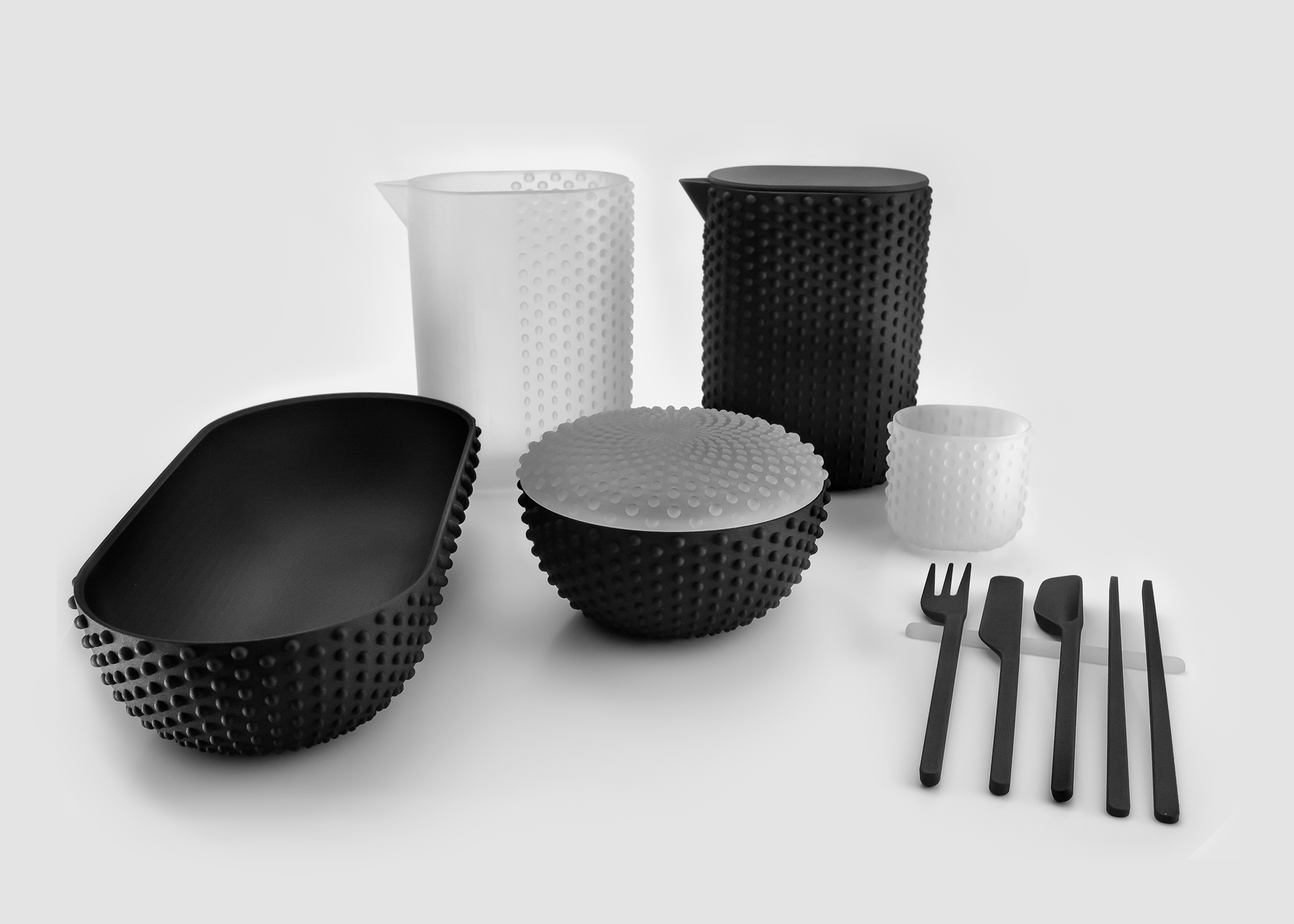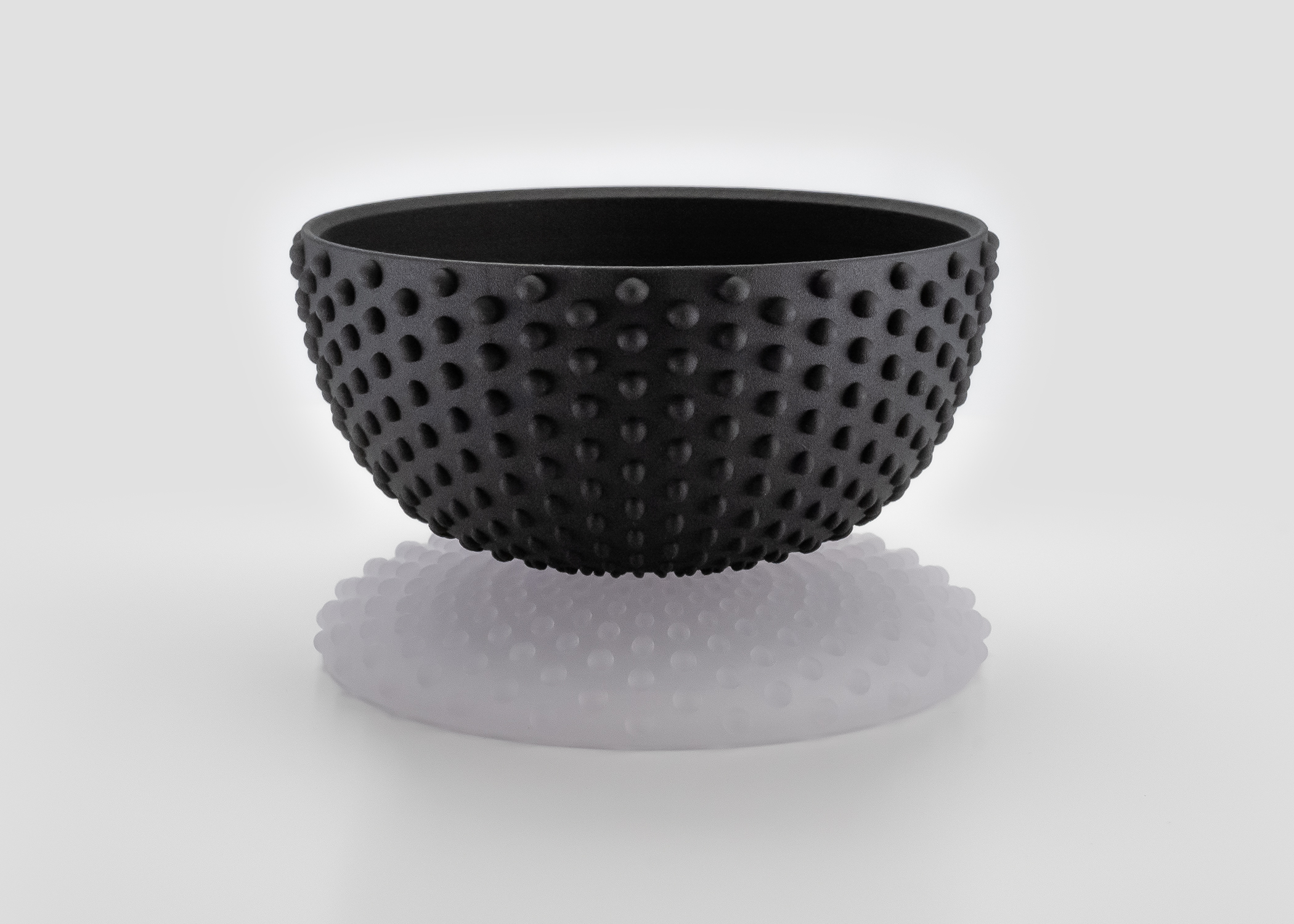 Artist: Joe Doucet / Cooper Hewitt, Smithsonian Design Museum
Artist: Joe Doucet / Cooper Hewitt, Smithsonian Design Museum
Photo: Donatello Arm
For world-renowned designer Joe Doucet, using 3D printing to create products that have a minimal environmental impact was never an afterthought. To Doucet, sustainability is key to the future of design.
“I’ve always been interested in new technologies, particularly ones that have the ability to be transformative in terms of manufacturing,” Doucet told Shapeways. “If you look at it from the fact that 3D printing allows each and every object to be unique and customized completely without creating the waste — both in terms of excess material and freights and shipping — it’s just a fundamental shift in the way that we create and consume products.”
Launching his 3D design career
Doucet is no stranger to the world of 3D design. He began using 3D printing for his first project back in 2000 and hasn’t stopped since. Shortly after that, Doucet discovered Shapeways and saw how cost and time efficient the company was when it came to prototyping (“I used Shapeways…to visualize what the final product would be like,” he said). So when it came time to launch his company OTHR, it only made sense to partner with Shapeways.
“We’ve had a long history with Shapeways. During the launch of OTHR, we formalized a partnership and a relationship with Shapeways to be really one of our main suppliers and partners.”
And now, National Design Award winning designer Doucet is using Shapeways to help curate a current exhibition in New York City that is open through April 14, 2019.
Tableware through the centuries on display
Artist: Joe Doucet / Cooper Hewitt, Smithsonian Design Museum
Video: Donatello Arm
The exhibition — which is titled Tablescapes: Designs for Dining, and is currently open to the public — confronted Doucet with a challenge: How do you use design to create solutions for the decrease in resources we see in the world? As resources get more limited, how do you make that less dystopian? How do you take these resources and make them into a beautiful experience of eating?
The exhibition is broken up into three sections: One depicting dining ware in the 19th century, another in the 20th century and a final section focused on dining and tableware in the 21st century. The 19th-century room is an artistic masterpiece bringing viewers back to the time of Napoleon III. The 20th-century room, on the other hand, shows the shift that occurred towards mass production of products. And finally, the 21st-century room paints a picture of the sustainable future we see a glimpse of today.
“When we were tasked to design the tableware and dinnerware for the 21st century…obviously to me, the decentralization of manufacturing and the addition of technology, being able to reduce the carbon footprints and allow infinite customization, was key to representing what the 21st century will be,” Doucet told Shapeways.
Partnering with Shapeways to find the perfect materials
Once Doucet was aware of the way he wished to construct each section of the exhibit, he went back to Shapeways to find the best materials and printing processes to use.
“We partnered with Shapeways quite early on in the process to explore different manufacturing techniques in terms of 3D printing to be able to create all the final pieces you’ll see at the exhibit. Shapeways is the sole producer of the tableware and cutlery.”
He adds, “It was a very hands-on process and Shapeways was closely involved. There were five or six different materials and processes that were considered in the beginning, and we essentially prototyped everything with all of these different available materials and printing techniques. We met at the Shapeways headquarters in New York and went through all the benefits and different quality levels that we were able to achieve.”
After much time spent on reviewing each material and printing option, calculating the benefits of each, Doucet and the Shapeways team were able to agree on the best way to create the products for the exhibit.
“I think we were all incredibly pleased with the results and quite surprised with the level of execution that we were able to achieve with the products that are on display now. They’re really stunning.”
Producing completely functional products
A highlight of the exhibit lies in Doucet’s vision to create products that can be used for cooking, serving and storing food. In the 21st-century room, the place settings can be used for all three functions, “as opposed to having three separate sets of containers for each step in that process. We decided it was best to eliminate as much as we could.”

Artist: Joe Doucet / Cooper Hewitt, Smithsonian Design Museum
Photo: Donatello Arm
“You’ll notice that on the objects, there’s this raised pattern, and it’s there not just to be a decorative element but they, in fact, would act as heat sinks to be able to distribute heat quickly in terms of the cooking process and then to quickly dissipate in the serving process,” Doucet said. “So you could take something from a microwave and put it on the table and the vessel would become cool to the touch very quickly.”
If anything, Doucet’s experience partnering with Shapeways and curating the Tablescapes: Designs for Dining exhibition was yet another clear indication of where the future of 3D printing lies.
Doucet explains, “It should be, at this point, fairly easy to see how 3D printing is going to fundamentally revolutionize how things are made. And I think companies like Shapeways, and Shapeways in particular, are really [game changers] in making this industrial revolution accessible to [anyone] at the touch of a button.”
Joe Doucet’s “Tablescapes: Designs for Dining” exhibition is on view now at the Cooper Hewitt, Smithsonian Design Museum through April 14, 2019.
Want more exclusive interviews with leading 3D designers? Sign up to our email list


Very interesting… but which materials were used? Are they food-safe?